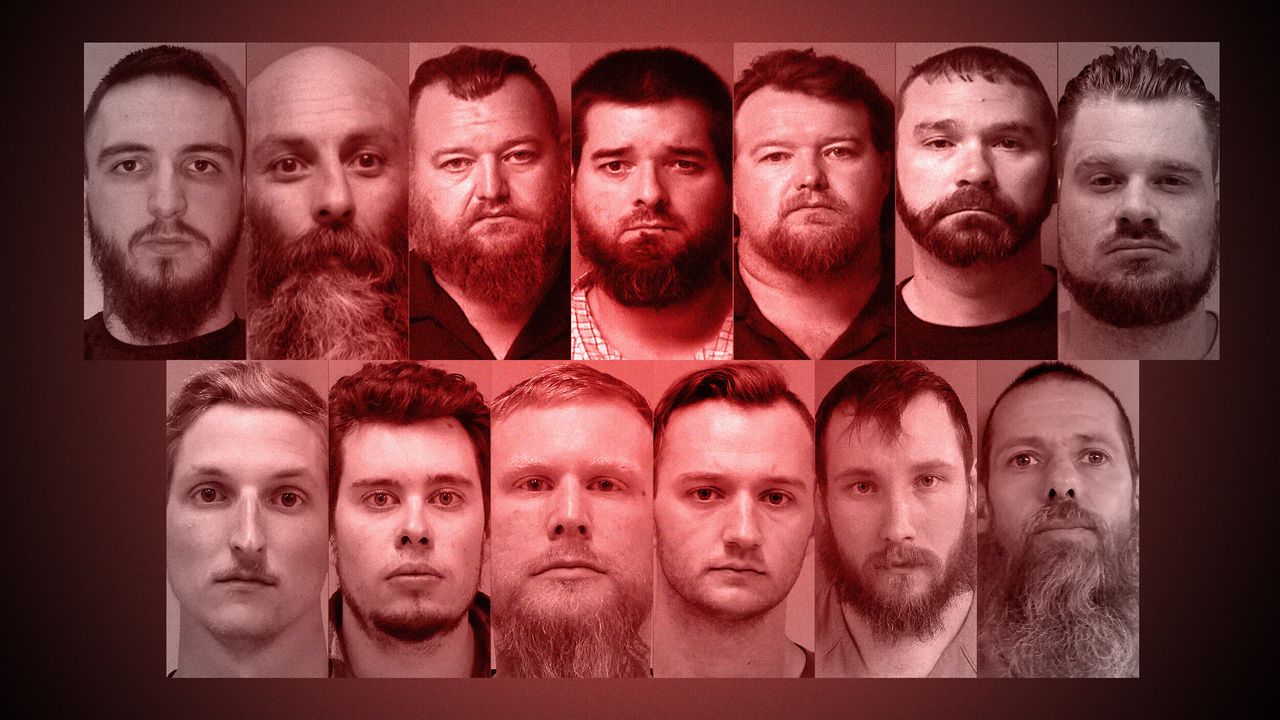This past week, 13 men belonging to paramilitary groups were arrested in a horrifying plot to kidnap Michigan’s Democratic governor, Gretchen Whitmer. Based on what can be gleaned from the men’s social media pages, they fit a familiar profile of far-right vigilantism in America.
They are white men. Most appear to be supporters of President Donald Trump. They consume disinformation and conspiracy theories online with abandon. They see a new American civil war on the horizon, and they’re more than eager to fire some of the first shots.
I’ve met these types of men before, all across the country, over the last four years while covering the American far right as a reporter. I’ve also seen the damage they’ve caused, and spoken to the people whose lives they’ve upended.
These men are part of an insurgent Make America Great Again fascist movement here, the size and power of which keeps me up at night. Although it’s a movement with origins that long predate the president, it’s one that today generates much of its cruel energy and momentum from his words.
“LIBERATE MICHIGAN!” Trump tweeted in April in a show of support for the armed protesters gathering outside Michigan’s state Capitol to protest Whitmer’s COVID-19 lockdown measures.
In the weeks that followed, these supporters would march into the state Capitol carrying long guns. They stood along a balcony and looked down menacingly at legislators. Among them were some of the 13 militia group members arrested this week.
Whitmer blamed Trump for the plot to kidnap her, telling reporters Thursday that the president’s rhetoric “incites more domestic terror.”
Scholars of fascism, who have long warned of this link between a leader’s rhetoric and the violence committed by his followers, agree. Jason Stanley, a professor of philosophy at Yale University and author of the book “How Fascism Works,” told me once that hateful speech from public leaders, left unchallenged, can become normalized.
“And then violence occurs like five to six years later,” Stanley said. “Look at Myanmar, look at Rwanda, look at Nazi Germany. You have some years between the onset of the hate speech and the normalization of violence and mass violence.”
In fascist movements, Stanley said, “there’s always a relationship between the rhetoric and the unofficial militia. That’s what we’re looking at right now.”
America’s unofficial militias, its white vigilantes, have been feeding off Trump’s hateful speech for years now. He launched his presidential campaign in 2015, after all, by calling Mexicans “rapists.” That same year he called for a “complete and total shutdown” of Muslims entering the U.S.
He won the 2016 election perhaps not despite those racist statements but because of them, and, in the four years since, headline after headline has described escalating acts of political violence committed by his supporters and by those who share his hateful worldview — headlines so frequent and relentless as to make them routine.
I wrote some of those headlines and it feels urgent now, in the final weeks leading up to this presidential election, to revisit those stories, and to recount the scale and intensity of MAGA hate and terror, lest it all becomes even more normalized.
The months after Trump’s inauguration were fraught with uncertainty and fear. Reports emerged of terrifying hate crimes, and in May 2017, I found myself in Portland, Oregon, talking to 22-year-old Ellie Lawrence, whose boyfriend had just been murdered.
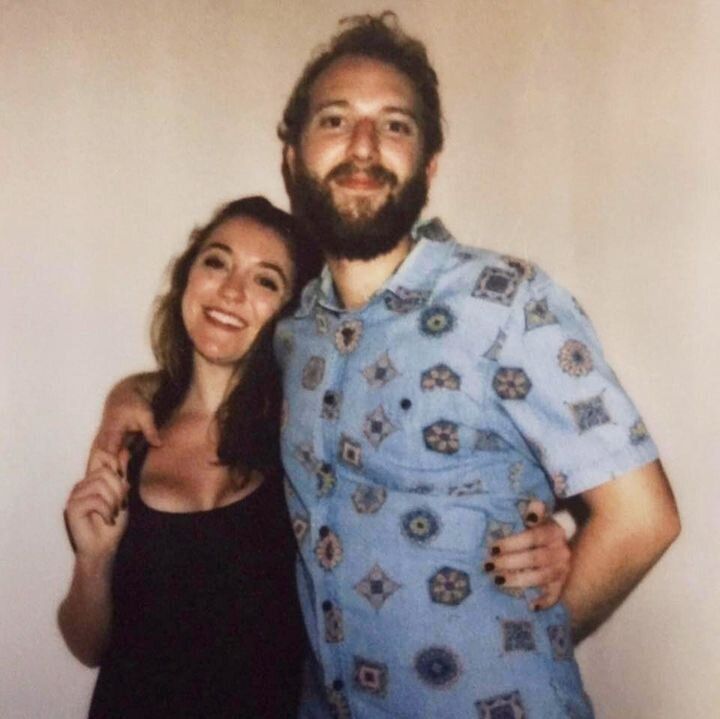
Lawrence nervously paged through a journal she’d kept of their relationship, wanting desperately for the world to know what a great man it had just lost and how much she had loved him. Her boyfriend, Taliesin Myrddin Namkai-Meche, had been aboard a MAX train in Portland when a white supremacist named Jeremy Christian started to harass two Black teen girls, one of whom was Muslim and wearing a headscarf.
When Namkai-Meche and two other men intervened to protect the girls, Christian stabbed all three of them, killing Namkai-Meche and another man.
“Tell everyone on this train I love them,” Namkai-Meche said as he lay dying.
The city was on edge. There’d been too many stories like this. One Black woman said three white men hit her with a brick and beat her. “We got a president who finally feels how we feel and we’re going to make America great again by getting rid of n****rs like you,” she recounted one of them saying.
In June 2017, I went to my hometown of Gettysburg, Pennsylvania, where a hundred or so neo-Confederates, militiamen and Ku Klux Klan members were gathering for a rally on the historic battlefield, site of the important Civil War fight that remains the deadliest ever on American soil.
It felt as if those gathering were preparing for another civil war. They carried big guns and wore bulletproof vests. They flew MAGA flags and Confederate flags, and talked gravely about the threat of “antifa.”
They told me with a straight face, in my town, that the Confederacy had nothing to do with slavery, even though when the Confederate Army marched into Gettysburg they abducted free Black Americans and sold them back into slavery in the South.
One man wore a T-shirt that had grown in popularity under Trump, who was always attacking the “fake news media.”
“Rope. Tree. Journalist,” the man’s T-shirt said. “Assembly Required.”
I walked up to him, press badge dangling from my neck, and took a photo, waiting for him to maybe explain that he didn’t really believe in what his shirt suggested. He just stared.
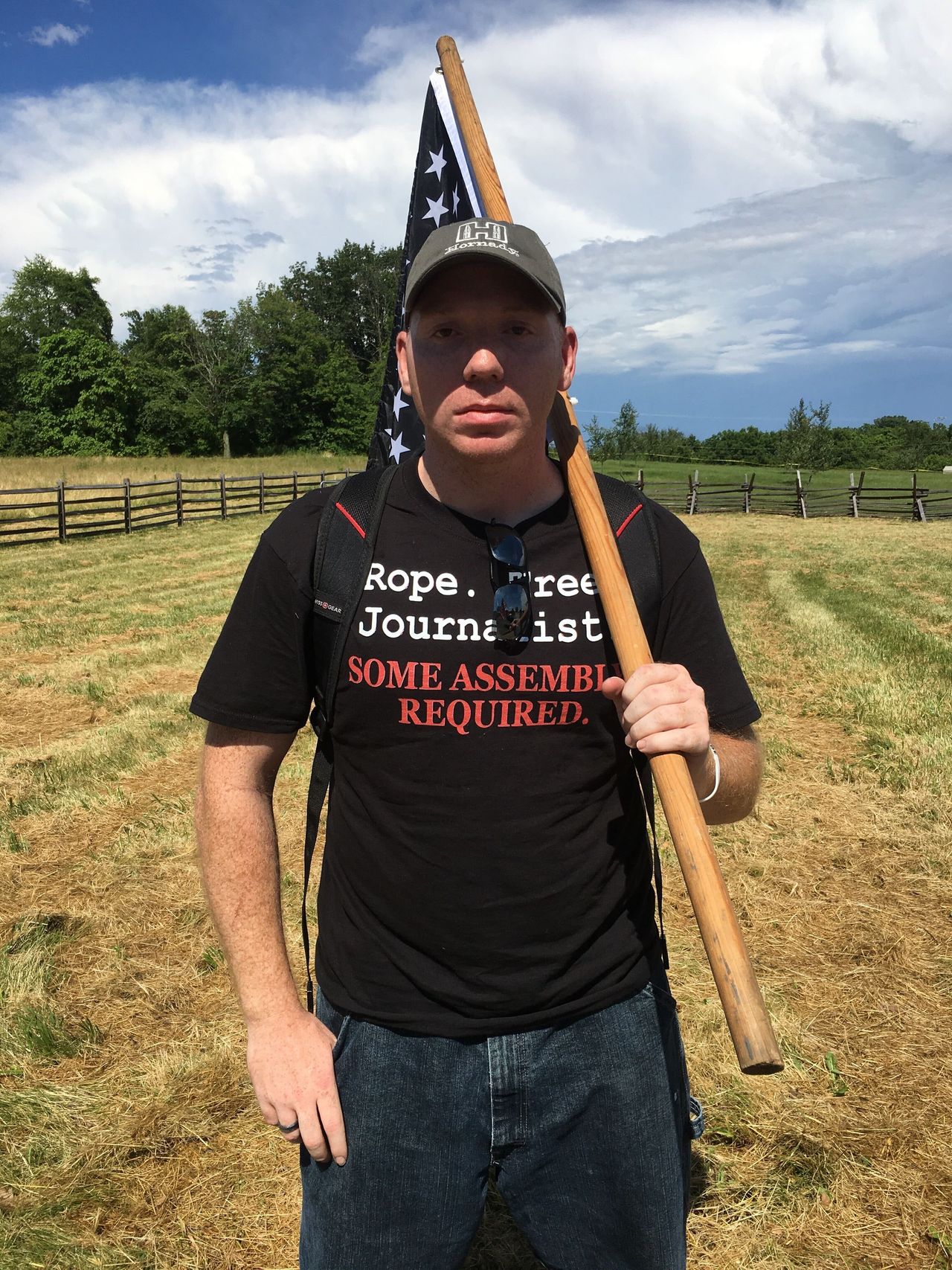
Later that summer, on Aug. 12, 2017, I was sent to cover the “Unite the Right” white supremacist rally in Charlottesville, Virginia.
I was in a parking garage that day when I saw a group of neo-Nazis beat a young Black man with flagpoles. I ran toward the attack but when one of the Nazis drew a gun and started waving it around, I ducked behind a car. When the attack ended and the victim ran away, I saw a pool of blood on the concrete. Outside, some 20 police officers stood around doing nothing.
A couple of hours later, I was interviewing a woman who’d just witnessed a neo-Nazi drive his car into a crowd of her fellow counterprotesters, killing 32-year-old Heather Heyer. The woman was shaking and inconsolable, crying so hard she could barely speak. She had just seen something that would haunt her for the rest of her life. I stopped the interview and said I was so sorry before walking away, feeling shaken myself.
That night, I walked through the park where earlier I’d seen some 1,000 white supremacists gather for the rally, the largest such gathering in a generation. Scattered on the ground were protest signs. “The Jewish Media Is Going Down,” read one. “We Support President Donald Trump,” read the other.
On the train back to New York, I watched a video on my phone of the president insisting to reporters that there were “very fine people” on both sides of the events in Charlottesville.
Over the next few months, America’s white supremacists — who were explicit in saying they felt emboldened by the president — held a series of rallies across the country. At one event in Gainesville, Florida, I talked to 28-year-old Colton Fears who explained to me — in a perfect expression of Trumpism that I still think about to this day — why he’d shown up that day.
“Basically, I’m just fed up with the fact that I’m cisgendered, I’m a white male, and I lean right, toward the Republican side,” Fears said, wearing a pin of the 3rd SS Panzer Division Totenkopf of the Waffen-SS. “And I get demonized if I don’t accept certain things.”
A few hours later, Fears and two other white supremacists were arrested after firing a gun at anti-racist protesters.
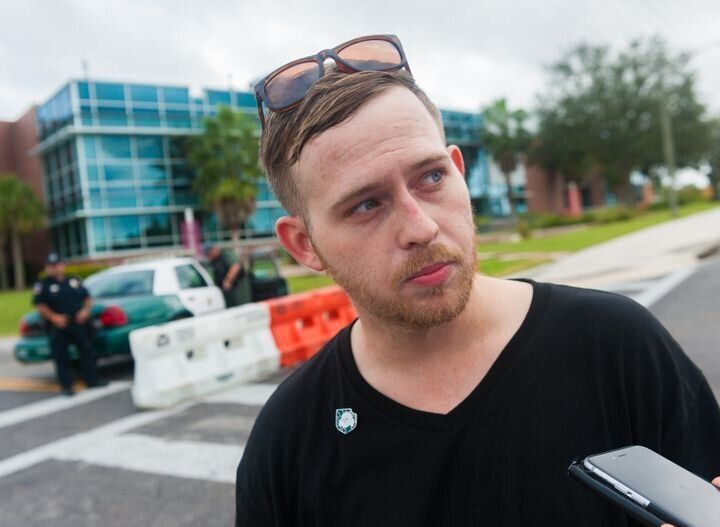
Around this time, I started paying particular attention to terror plots targeting Muslims, a group whom Trump routinely demonized and dehumanized.
In March 2018, I wrote about three men who were arrested for bombing a mosque in Minnesota. The bombing, which Trump had refused to condemn, came after multiple incidents in which the president had lashed out at Somali Muslim immigrants in the state, calling them a “disaster.”
The three men were Trump supporters. A colleague and I even discovered that the leader of the group had admired the president so much he had submitted a detailed bid to build the president’s wall on the Mexican border.
The next month, I was in a federal courthouse in Wichita, Kansas, as prosecutors played recordings of three other men, members of a militia group, plotting to massacre Muslims.
Muslims were “cockroaches,” one of the men said in a recording. “You have to kill all of them. They keep coming back. You have to exterminate them all.”
I listened, aghast, and looked around the courtroom gallery, surprised to see how empty it was — that the whole country wasn’t closely following this case, that so few people seemed to care.
The three defendants were avid Trump supporters. According to testimony at the trial, as Trump warned Americans of Somali refugees being terrorists in disguise — “the great Trojan horse of all time,” he called them — the men decided they were going to bomb a Garden City apartment complex where many Somali Muslims lived and “make Jello out of their insides.”
One day during the trial, I went to that apartment complex and watched people leave for work or return home, or say hello to their neighbors, or play outside with their kids, and I couldn’t bring myself to interview them, to ask them if they’d known about the men who wanted to obliterate them because of their faith.
I got back into the car and drove away.
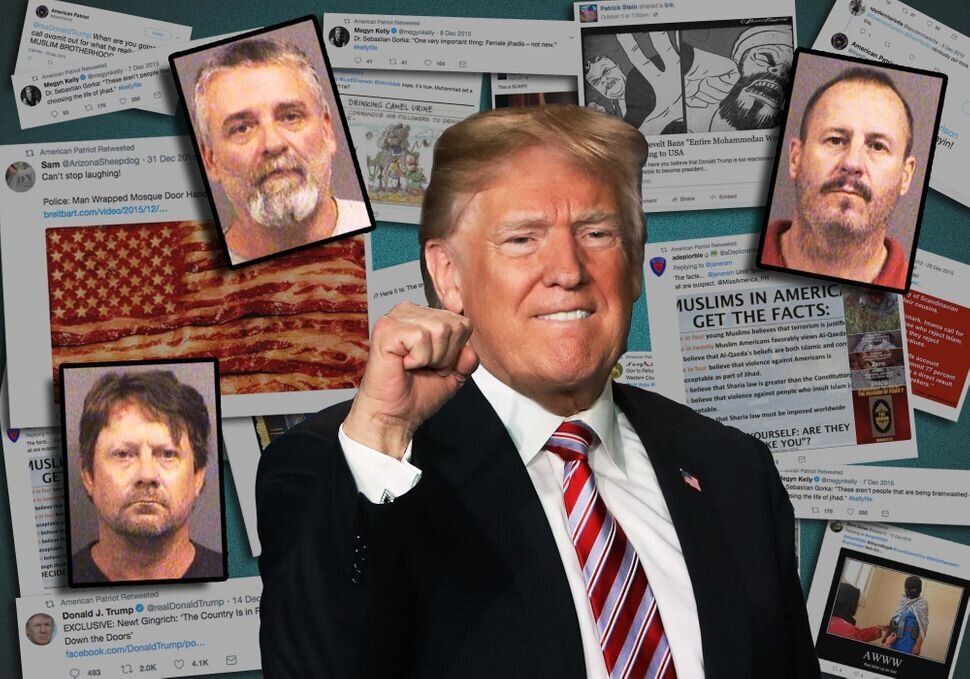
The months passed, and as the country geared up for the 2018 midterm elections, I followed along on Twitter as some of my friends at CNN were evacuated from the network’s headquarters in New York. An explosive device had been sent there in the mail.
A few days later, authorities arrested a Trump supporter named Cesar Sayoc for sending the bomb, one of many he’d put in the mail, addressed to prominent Democratic politicians including former President Barack Obama and now-vice presidential candidate Kamala Harris.
Police found Sayoc in a van covered in MAGA decals and messages attacking the “fake news” media. (Later his lawyers would argue in court that their client was a Trump “super fan” who, after listening to the president’s speeches, had started “to consider Democrats as not just dangerous in theory, but imminently and seriously dangerous to his personal safety.”)
Only one day after Sayoc’s arrest, a white supremacist named Robert Bowers walked into Pittsburgh’s Tree of Life synagogue with a gun and opened fire, killing 11 worshippers there.
I drove from New York to Pittsburgh, past more Trump signs than I could count, and arrived outside the synagogue where people had already started laying flowers around 11 makeshift Star of David memorials. I talked to a woman there whose lip started to quiver as she held back tears while telling me about how two friends of hers had been shot inside the synagogue, one of whom had just died.
In the weeks leading up to the shooting, Trump and Fox News, which often shares the president’s propaganda, had been spreading fear and lies about a caravan of migrants in Mexico making its way to the United States. Bowers, the synagogue shooter, held the anti-Semitic belief that Jews were funding this caravan.
Trump visited Pittsburgh after the shooting, despite pleas from the mayor not to, staging a three-hour photo op as protesters marched near the synagogue reciting the mourner’s kaddish and singing “Ozi V’Zimrat Yah,” maybe loud enough for the president to hear. Before this moment, I’d never cried while reporting on atrocities across America, but I’ll admit that I suddenly and briefly broke down in tears then, struck first by the sadness and pointlessness of it all, but then by the beauty and resilience of those singing and praying in the streets.
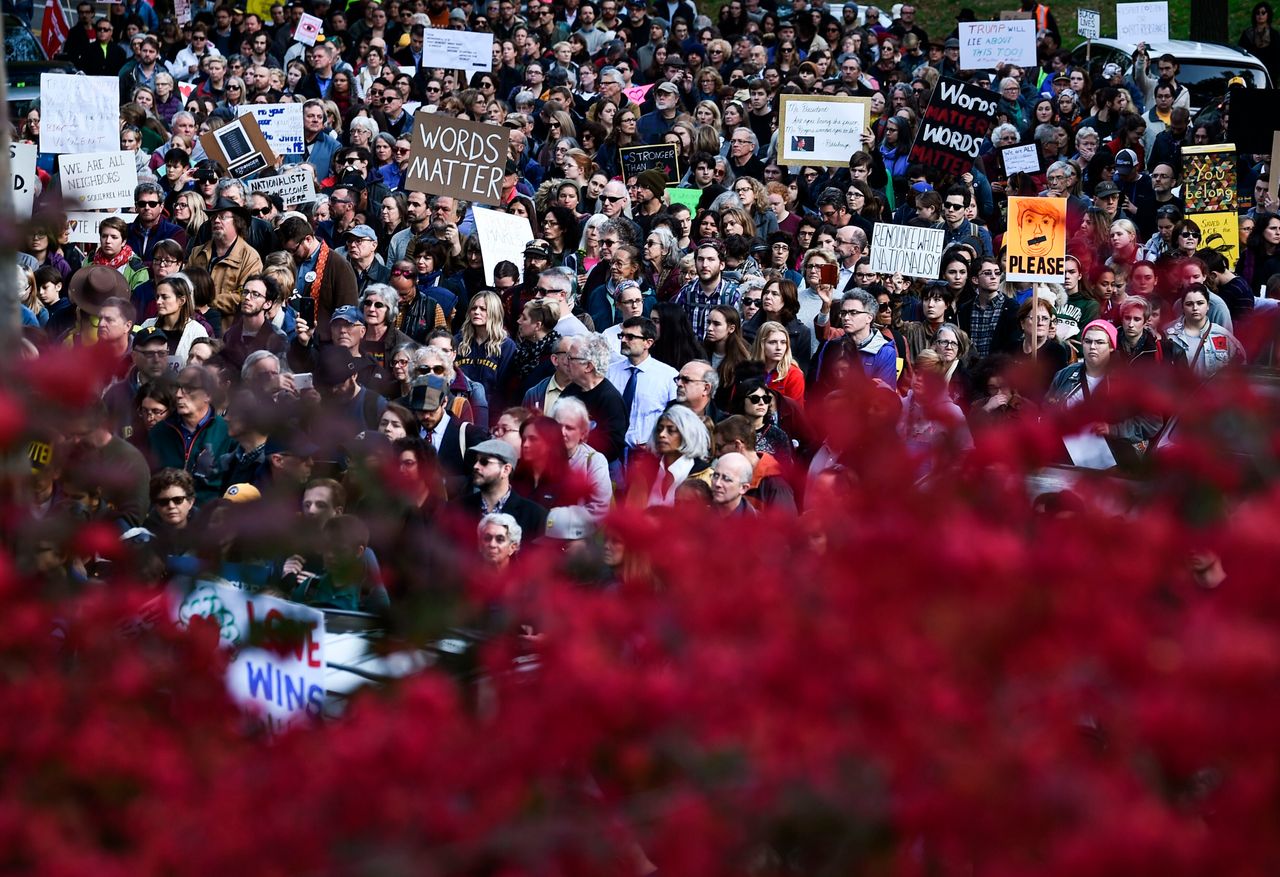
Because of my experience covering the far right, my editors at HuffPost thought it’d be good for me to start covering Trump’s campaign rallies in order to identify extremist elements among the attendees.
So in February 2019 I went to my first Trump rally, in El Paso, Texas. There, sitting in the front row as Trump spoke, was Stewart Rhodes, leader of a national far-right militia called the Oath Keepers.
I was also struck by how many in the crowd were believers in QAnon, a pro-Trump conspiracy theory based on clues posted online by an anonymous person known as “Q” who claims to be a senior government official with access to intelligence about a globalist cabal of Satan-worshipping pedophiles waging war against the president.
QAnon is an authoritarian fantasy, imagining Trump as an almighty ruler who will one day soon vanquish his political enemies. Believers in this fantasy have committed multiple acts of violence. (Earlier this year, a woman in New York was arrested with a car full of knives after she posted a video accusing Democratic presidential candidate Joe Biden of child sex trafficking and threatening to kill him.)
I’ve now gone to about 10 Trump rallies since the one in El Paso and at each one I’ve noticed more and more QAnon believers, who have talked to me about the president with a religious fervor. At each rally, I’ve seen MAGA vendors hawking Q pins and T-shirts with the conspiracy movement’s slogan: “Where We Go One, We Go All.”
Also a fixture at these rallies have been members of the Proud Boys, a neo-fascist gang in black shirts and red MAGA hats, infamous for violently attacking leftist protesters in the streets. About 20 Proud Boys approached me in Orlando asking me why I’d called them fascists in a tweet.
A short time later, this same group of Proud Boys was filmed marching through the streets, chanting, “Pinochet did nothing wrong!” The phrase was derived from a popular white supremacist meme and is a reference to former Chilean dictator Augusto Pinochet’s penchant for murdering leftists by throwing them out of helicopters into the ocean.
I began to realize that there weren’t just some scattered extremist elements at Trump rallies, but that the rallies themselves were festivals of far-right extremism, and that the GOP had been transformed in Trump’s image.
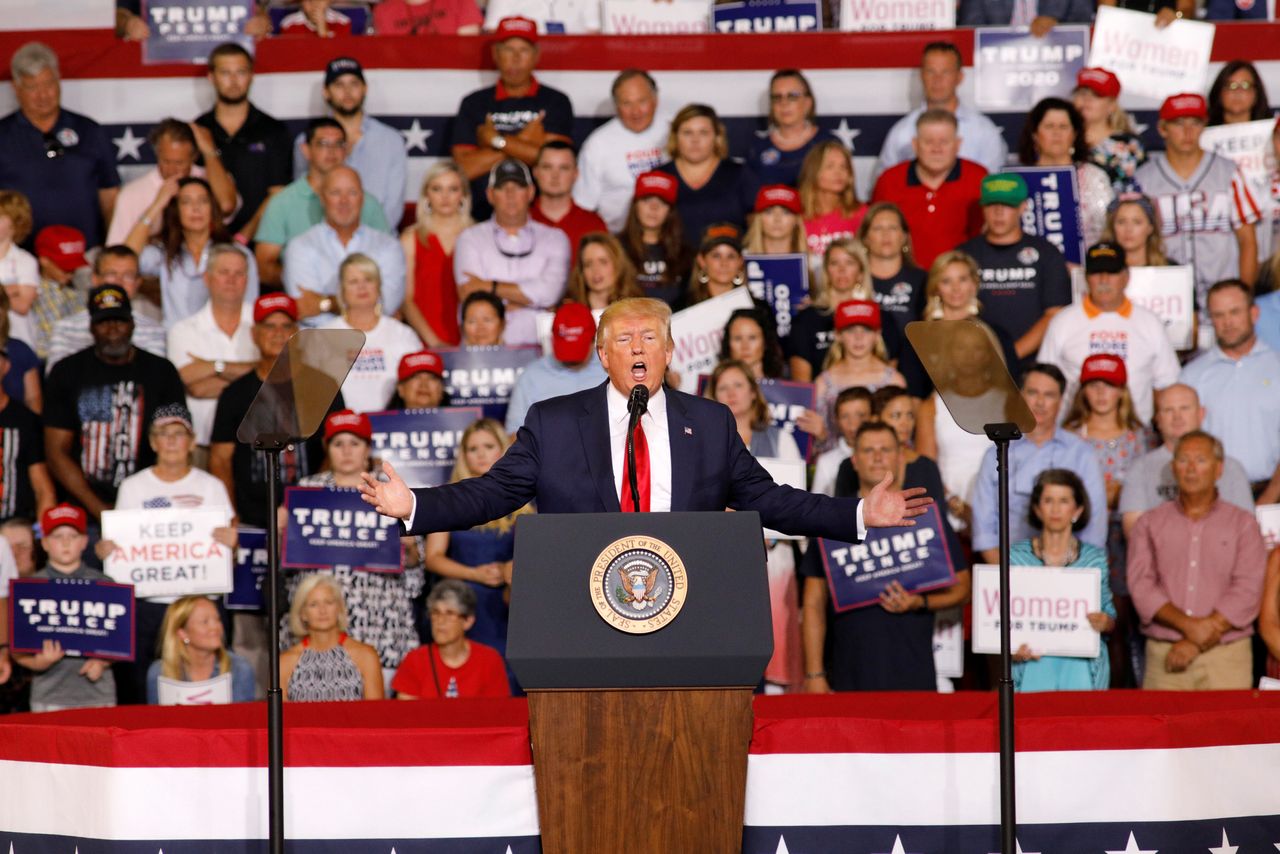
I’ll never forget the white, middle-aged couple wearing Trump campaign T-shirts in Greenville, North Carolina, sitting on a pair of lawn chairs beneath a tree waiting for the rally to start, calmly explaining to me the need to ethnically cleanse the U.S. of Muslims.
A few hours later, they were among a crowd of thousands cheering on the president as he once again called for four Democratic congresswomen of color, all of whom are American, to “go back” to the countries they came from.
And when the president mentioned Rep. Ilhan Omar (D-Minn.) — who came to this country as a Somali refugee before becoming a citizen — thousands of people inside the arena broke into a chant of “Send her back!”
The president stood silently and watched his handiwork. (Later, authorities would arrest a New York Trump supporter for threatening to kill Omar.)
The most recent MAGA rally I attended was last month in Lititz, Pennsylvania. Vice President Mike Pence spoke to the crowd before attendees settled in to watch the first presidential debate between Trump and Biden on two big screens the campaign had erected in the middle of a farm field.
The debate was perhaps the most chaotic in American history, with Trump interrupting Biden at every opportunity with a multitude of cruelties and lies. I watched the crowd in Pennsylvania laugh with glee.
When the debate moderator asked Trump to condemn white supremacists, the president once again refused. And when asked specifically to condemn the Proud Boys, Trump told the group only to “stand back and stand by.”
I noticed a member of the Proud Boys watching the president talk about his group on the big screen. He laughed and cheered and started texting on his phone.
The president’s message of “stand by” ― I support you, I share your views, I’ll need you when the day comes — was received loud and clear.
